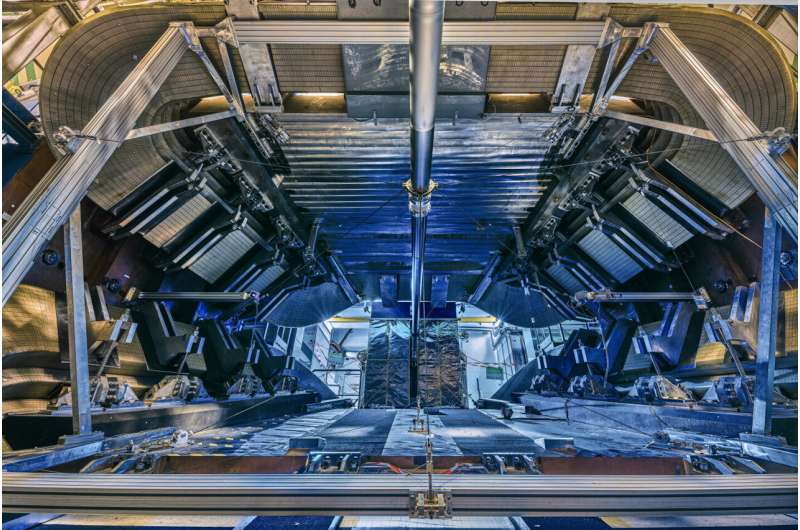This article has been reviewed according to Science X's editorial process and policies. Editors have highlighted the following attributes while ensuring the content's credibility:
fact-checked
trusted source
proofread
Searching for new asymmetry between matter and antimatter

Once a particle of matter, always a particle of matter. Or not. Thanks to a quirk of quantum physics, four known particles made up of two different quarks—such as the electrically neutral D meson composed of a charm quark and an up antiquark—can spontaneously oscillate into their antimatter partners and vice versa.
At a seminar held March 26 at CERN, the LHCb collaboration at the Large Hadron Collider (LHC) presented the results of its latest search for matter–antimatter asymmetry in the oscillation of the neutral D meson, which, if found, could help shed light on the mysterious matter–antimatter imbalance in the universe.
The weak force of the Standard Model of particle physics induces an asymmetry between matter and antimatter, known as CP violation, in particles containing quarks. However, these sources of CP violation are difficult to study and are insufficient to explain the matter–antimatter imbalance in the universe, leading physicists to both search for new sources and to study the known ones better than ever before.
In their latest endeavor, the LHCb researchers have rolled up their sleeves to measure with unprecedented precision a set of parameters that determine the matter–antimatter oscillation of the neutral D meson and enable the search for the hitherto unobserved but predicted CP violation in the oscillation.
The collaboration had previously measured the same set of parameters, which are linked to the decay of the neutral D meson into a positively charged kaon and a negatively charged pion, using its full data set from Run 1 of the LHC and a partial data set from Run 2.
This time around, the team analyzed the full Run-2 data set and, by combining the result with that of its previous analysis, excluding the partial Run-2 data set, it obtained the most precise measurements of the parameters to date—the overall measurement uncertainty is 1.6 times smaller than the smallest uncertainty achieved before by LHCb.
The results are consistent with previous studies, confirming the matter–antimatter oscillation of the neutral D meson and showing no evidence of CP violation in the oscillation. The findings call for future analyses of this and other decays of the neutral D meson using data from the third run of the LHC and its planned upgrade, the High-Luminosity LHC.
Other neutral D meson decays of interest include the decay into a pair of two kaons or two pions, in which LHCb researchers observed CP violation in particles containing charm quarks for the first time, and the decay into a neutral kaon and a pair of pions, with which LHCb clocked the speed of the particle's matter–antimatter oscillation. No avenue should be left unexplored in the search for clues to the matter–antimatter imbalance in the universe and other cosmic mysteries.
Provided by CERN





















